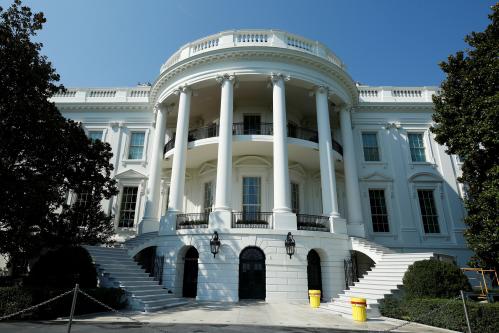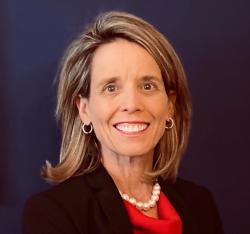On Jan. 14, 2017, the Obama White House hosted 30 incoming staff members of the Trump team for a role-playing scenario. A readout of the event said, “The exercise provided a high-level perspective on a series of challenges that the next administration may face and introduced the key authorities, policies, capabilities, and structures that are currently in place to respond to major domestic incidents.” One of these “domestic incidents” was a pandemic—addressing issues that are now familiar territory: travel bans, vaccines, and ventilator shortages. This transition exercise provided a unique opportunity for incoming presidential advisers to understand the “whole of government” approach that such a crisis requires.
Though recalling the details of a three-hour, table-top exercise roughly three years after it occurred is challenging, it is even more difficult when only 8 of the 30 Trump attendees are still working for the president. Perhaps more significantly, the transition exercise readout identified key White House offices involved in pandemic preparedness, and my research reveals the tremendous upheaval that has occurred in these pandemic-related offices.
| Table 1: 11 Key White House Positions Involved in Pandemic Response |
| Chair, Assistant to the President for Counterterrorism |
| Chief of Staff |
| National Security Advisor |
| White House Counsel |
| Director, Domestic Policy Council |
| Deputy National Security Advisor |
| Assistant to the President and Director White House Military Office |
| Deputy Homeland Security Advisor |
| National Security Council Chief of Staff |
| Director of the Office of Science and Technology Policy (OSTP) |
| Director of the Office of Management and Budget (OMB) |
While this list of pandemic-related offices could arguably serve as a blueprint for the Trump administration, what stands out immediately is that the chair of this exercise, the Assistant to the President for Counterterrorism, is a position that no longer exists. Initially Thomas Bossert, a veteran of the George W. Bush administration, was appointed Assistant to the President for Homeland Security and Counterterrorism. Bossert was forced to resign in April 2018 when incoming National Security Advisor, John Bolton, eliminated the position and folded it into the National Security Council (NSC), renaming it “Homeland Security and Counterterrorism Adviser,” and demoting the position from the most senior commissioned title (Assistant to the President).
Apart from this significant staff restructuring, the other noteworthy aspect of these White House jobs is the overall amount of turnover compared to the two previous administrations. The table below indicates the number of occupants in pandemic-related positions for the Trump, Obama, and Bush administrations.
| Table 2: Turnover Among Pandemic-Related White House Positions | ||||||
| Position | Trump Occupants (as of 12/2019) |
Obama Occupants (as of 12/2011) |
Bush Occupants (as of 12/2003) |
|||
| Asst. to the Pres. for Counterterrorism | 3[*] | 1[**] | 2 | |||
| Chief of Staff | 3[***] | 2 | 1 | |||
| Nat’l Sec’y Advisor | 4 | 2 | 1 | |||
| WH Counsel | 2 | 3 | 1 | |||
| Director, DPC | 2 | 1 | 2 | |||
| Dep. Nat. Sec’y Adv. | 6 | 2 | 1 | |||
| Asst. to the Pres. and Dir. WH Military Office | 2 | 2 | 2 | |||
| Dep. Homeland Sec’y Advisor[****] | 3 | 1 | 2 | |||
| NSC Chief of Staff | 4 | 2 | 1 | |||
| Director OSTP | 1 | 1 | 1 | |||
| Director OMB | 2 | 2 | 2 | |||
| Total Occupants | 32 | 19 | 16 | |||
The numbers boldly illustrate the extraordinary amount of turnover across these pandemic-related White House jobs. Of these White House positions deemed central to “respond to major domestic incidents,” only the Director of the OSTP has had a single occupant, Kelvin Droegemeier. Though seemingly a standout within the Trump White House, it is also important to note that the position lacked a director until he was formally sworn in on February 2019, a little over two years after Donald J. Trump was inaugurated. Additionally, in less than three years in office, one office has had as many as six occupants, two units have had four occupants, three offices have had three occupants, and four offices have had two occupants (a more typical level of turnover). Turnover amongst the Trump pandemic team was double that of President George W. Bush’s team and more than a third greater than the Obama pandemic staff.
Conflicting and confusing presidential messages, test scarcity, uncertainty about ventilator availability and a task force that changed composition at least three times reflect a leadership vacuum that, in part, stems from staff turnover. Though there are many reasons why the administration bungled the nation’s response to the novel coronavirus, high turnover is one of the most compelling ones. Why does turnover matter? Stability, experience and relationships are three critical features of a high-functioning White House staff, and frequent turnover undermines every single one of those attributes.
Instability has been a problem throughout Trump’s entire first term, as demonstrated by record levels of turnover in the senior staff and Cabinet. High turnover correlates with inexperience. When leaders come and go frequently, acquiring some sort of institutional memory and expertise is impossible. In addition, high turnover makes it difficult to foster important relationships across the executive branch, within Congress and among state and local elected officials. Since the White House staff must act through agencies and departments, part of a White House staffer’s effectiveness is his or her ability to forge relationships across the government. White House staff need to have relationships in state governments as well as in the federal government. Frequent reports of state governors’ confusion and dissatisfaction suggest that turnover has undermined the White House’s ability to manage a coordinated response to COVID-19.
Admittedly even the best White House staff would have encountered challenges fighting a pandemic, but the fact that there was never a steady core of senior, experienced, advisors around the president for any meaningful period of time undermined the Trump administration’s capacity to respond.
Note: Since COVID-19 was first detected in mainland China in December of 2019, I use that date as the end point for determining prior turnover within pandemic-related White House jobs.
[*] Position eliminated under National Security Advisor Bolton folded into the National Security Council (NSC) at a lower rank. Those who succeeded Thomas Bossert and operated from the NSC (within the first 35 months) include Doug Fears and Peter Brown as Deputy Assistant to the President.
[**] Title changed under President Obama to “Deputy National Security Advisor for Homeland Security and Counterterrorism” and then back to Assistant to the President for Homeland Security and Counterterrorism.
[***] On March 6, 2020, in the midst of the pandemic, President Trump replaced acting Chief of Staff Mick Mulvaney with Mark Meadows, the fourth chief of staff since President Trump was inaugurated. Congressman Meadows resigned from Congress on March 30, 2020 enabling him to begin his first day as chief of staff on March 31, 2020. The chart above only indicates three chiefs of staff due to the 12/19 deadline for determining number of occupants.
[****] Identifying specific deputies was difficult because their roles are somewhat under the media radar. However, I did find that whenever there is a new Assistant to the President for Counterterrorism, they are typically accompanied by a new deputy, much like a National Security Advisor and Deputy National Security Adviser. As such, I used the number of occupants for the Assistant to the President for Counterterrorism.
The Brookings Institution is committed to quality, independence, and impact.
We are supported by a diverse array of funders. In line with our values and policies, each Brookings publication represents the sole views of its author(s).







Commentary
How instability and high turnover on the Trump staff hindered the response to COVID-19
May 7, 2020